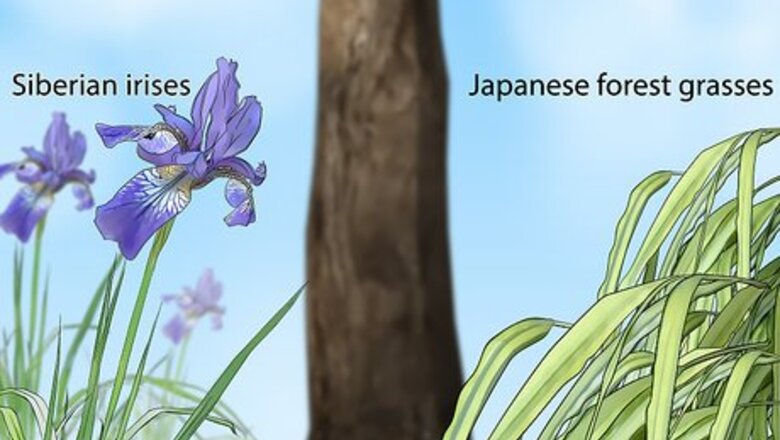
views
Choosing the Right Plants
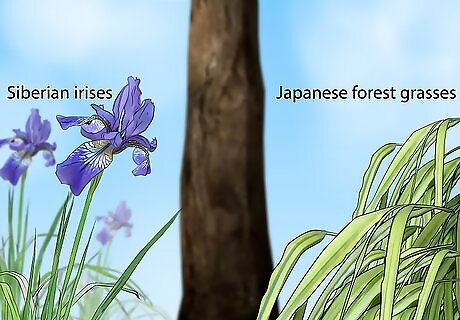
Opt for small plants to minimize disturbance to the tree's root system. Small plants require smaller holes to be planted in, which will cause less stress to the tree above them. Aim to buy plants with coin-sized bulbs that you can tuck in between the tree's roots. If you want to create a bold effect, plant many small plants instead of fewer big plants, choosing from options like: Siberian irises, violet-colored flowers with delicate petals Japanese ferns, small plants with silvery-green leaves Columbines, small plants with colorful bell-shaped flowers Japanese forest grasses, elegant clumps of grass with small blooms
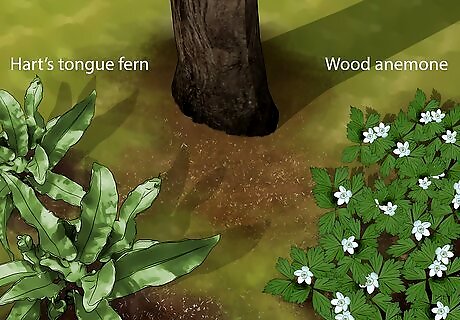
Pick out plants that thrive in shade to put under big trees. The area beneath large, mature trees will not get much sun, which narrows down your options for planting. Be sure to select hardy plants and flowers that thrive in the shade. These might include: Common columbine, or Aquilegia vulgaris, white flowers with green tips. White campions, or Silene fimbriata, delicate white flowers with pink tips. Lungworts, or Pulmonaria, red or blue flowers with leaves with silver markings. Hart’s tongue fern, or Asplenium scolopendrium, a fern with tongue-shaped leaves. Wood anemone, or Anemone nemorosa, plants with white, pink, or blue blooms.
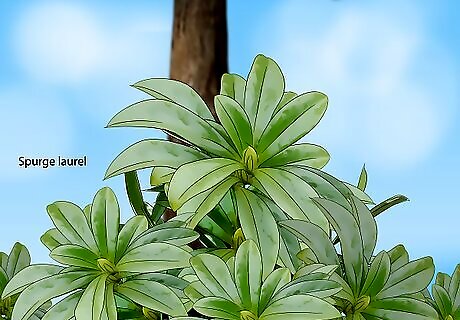
Choose leafy plants with interesting foliage to fill the space year round. Most flowers don't bloom year round, meaning that there may be a lack of color and texture under your tree through most of the year. To compensate for this, choose some leafy plants with different colors and shapes of foliage to create visual appeal all year long. Some examples include: Ruscus aculeatus (also known as butcher's broom), a plant with long, spiny foliage. Daphne laureola (also known as spurge laurel), a plant with dark green, leathery leaves. Japanese laurel 'Crotonifolia', a plant with large, glossy, yellow-speckled leaves. Continus 'Flame', or Cotinus coggygria, a plant with light green leaves that turn orange or red in autumn.
Adding the Plants
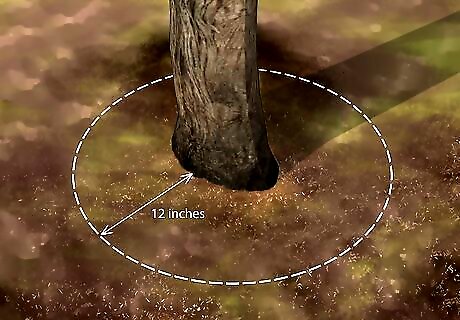
Start planting at least 12 inches (30 cm) away from the tree trunk. Cutting or tearing a tree's bark may leave it vulnerable to disease and insects. Avoid this by leaving a gap between the base of the tree and your plants. Start planting around 12 inches (30 cm) from the tree and plant outwards. The tree will grow in diameter so be sure to leave room between the trunk and the new plants. If you plant annual plants, it will be easier to maintain this distance between the tree trunk and the plants when you replant them every year.
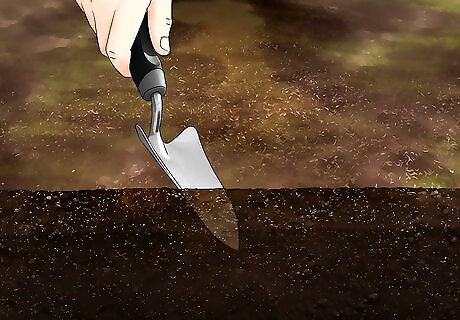
Use a small hand trowel to dig into the soil to prevent tree root damage. Large trees have numerous small, woody roots living within the top 12–18 inches (30–46 cm) of the soil. When planting, it is important not to damage the tree's roots by cutting or breaking them. Dig with a hand trowel instead of a garden shovel to be as cautious as possible. A tree's smaller roots are important because they are responsible for absorbing water and nutrients from the soil.
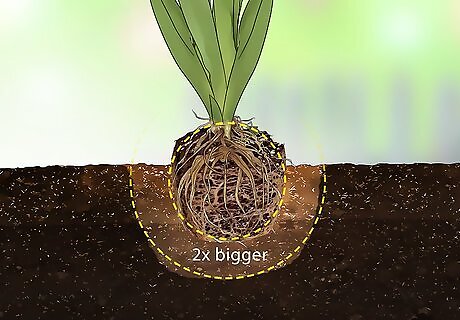
Dig holes twice as large as the plants' root balls to plant them in. Using the trowel, carefully make a hole in the soil that's equally deep and twice as wide as the root ball of the plant you are inserting into the ground. Position these holes between tree roots. Dig slowly to avoid damaging tree roots with the trowel. Where larger surface tree roots are growing, position the plants at least 2–3 inches (5.1–7.6 cm) away from the root. Be sure to space the plants out to allow for their mature width. It is best to plant established plants or seedlings instead of seeds so that you can better control the positioning of your plants.

Place the plants in the holes and spread out their roots. Loosen the roots of each plant with your fingers before planting it. Position each small plant in the space you dug for it. Gently spread out the plant's roots as much as possible within the hole you dug. Fill in any space around the plants with soil. Wear gardening gloves to protect your hands.
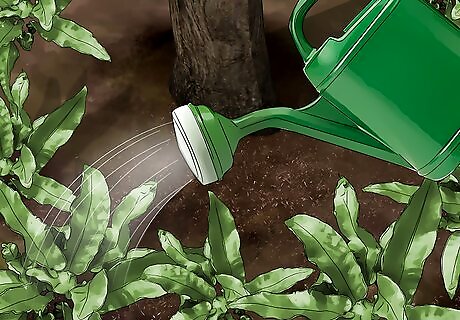
Water the plants thoroughly. Once planted, your small plants will have to share their water supply with the large tree above them. Compensate for this by watering them right after planting. Give the soil enough water to visibly moisten it.
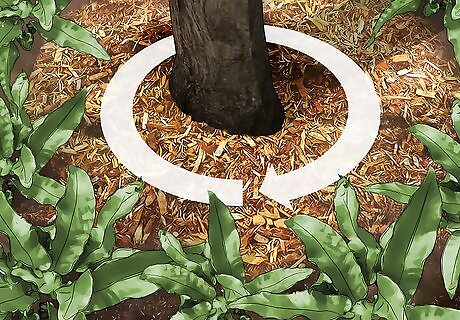
Add a 3 in (7.6 cm) layer of mulch around the tree after planting. Mulch will help conserve soil moisture to allow both your tree and plants to stay hydrated. Lay a thick layer of mulch around your plants right after adding them under your tree. Use an organic material as mulch, such as: Grass clippings Hardwood bark Peat moss Shredded bark Shredded leaves















Comments
0 comment